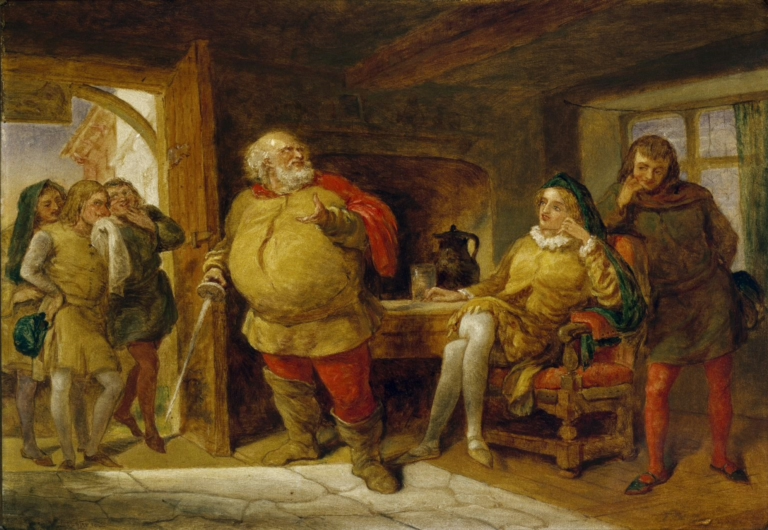The Tortured Artist: Creativity Myth or Reality?
Just as the Corybantian worshippers do not dance when in their senses, so the lyric poets do not write those fine songs in their senses, but when they have started on the melody and rhythm they begin to be frantic, and it is under possession […] that the soul of the lyric poets does the same thing.
— Plato on “divine madness,” Ion 534a
Recently, when talking with a friend about the nature of creativity, and specifically creativity myths, the subject of the ‘tortured artist’ came up. My friend rattled off an impressive list of famous creative-types who have experienced mental illness, and asked my opinion on whether there is any link between creativity and mental illness and the whole notion of the ‘tortured artist.’

My short answer was “no.” But who likes short answers? Here’s the long version.
‘Madness’ hasn’t always been bad
The idea of the ‘tortured artist’ has been a popular trope for a long time, and there certainly have been artists who have experienced extreme psychic pain. I don’t think, as a rule, however, an artist is more likely to suffer than anyone else.
So where does the idea of the ‘tortured artist’ come from? It may boil down to a simple misunderstanding.
To ancient Greeks, madness was a state of inspiration that could be brought on by divine or demonic forces. Demonic madness, unsurprisingly, was thought bad, and its signs were likely similar to the signs of mental illness today. But divine madness was a very different thing, and likely very similar to our notion of being in a flow state, or being in-the-zone. The Greeks just believed this creative intensity had a divine origin. If you’ve read a few pages of the Iliad, this shouldn’t be too surprising. Many Greeks saw divine origin just about anywhere they looked.
Plato‘s quote at the beginning of this article is just another way of saying that when artists are creating good work, they seem to enter into a deep state of immersion which can look to an outsider like divine influence.
Over time, language has changed, and Plato’s evocation of ‘madness’ no longer represents the popular understanding of the word as he meant it. Perhaps it’s fitting that a culture that left us so much wonderful mythology may also be unintentionally responsible for one of our own most pervasive creativity myths.
When the ‘tortured artist’ became sciencey.
While a misunderstanding of the ancient Greek’s intention of ‘divine madness’ may be the origin of the ‘tortured artist’ archetype, this archetype was given a scientific sheen in the 1980-90s through series of studies by a group of psychologists . The conclusions of these studies appeared to support the link between mental illness and creativity, and were widely cited both throughout the psychology community and popular culture.
Despite their continued influence in popular culture, these studies have lost ground in the psychology community. A 2009 review psychologist Judith Schlesigner uncovered a number of methodological shortcomings in these studies that should cast doubt on their conclusions. Among the problems she uncovered were small and unrepresentative sample sizes, the lack of control groups, and the use of non-validated tools for self report (ie, questionnaires and scales).
We need to acknowledge that the scientific backing for the ‘tortured artist’ is itself troubled.
Artists bare their souls, and we know it
In my estimation, the myth of the ‘tortured artist’ exists for a simple reason: An artist is more likely to disclose mental illness than the average worker.
There are a couple of explanations for this.
- Artists are more likely than many non-artists to reveal personal experiences in their work, so if mental illness has been a part of the artist’s life, it is more likely show up in his or her work.
- We know that artists are more likely to reveal personal experiences in their work, so we are more likely to be curious about their personal histories than we are for non-artists.
A hypothetical scenario:
A poet and a salesman are experiencing identical signs and symptoms of depression. The poet gives us a poem to read, and the salesman pitches a great new product.
What are our expectations of each?
If the poet’s work revealed her experiences with depression, we probably wouldn’t bat an eye. But we would be quite surprised if the salesman’s pitch did.
Then, if we liked the poet’s work, we might become curious about her personal experiences, because we understand that these may have informed her work. But if we liked what the salesman was selling, we’d probably just want to research the product itself, or possibly other products he endorses. We’re likely to be not-at-all interested in his personal life.
So we have two people experiencing identical depressive episodes, but their profession has a significant influence on how likely they are to disclose this information, and also how likely we are to seek it out. As a result, we almost expect a poet to tells us she has the blues, but we don’t even think to ask how our sales reps, nurses, waiters, and barbers are feeling.
So, what are they feeling? The statistics might surprise you.
Careers with high prevalence of mental illness
According to a 2003 study from the Queen Mary School of Medicine in the U.K., the following professions were found to have high prevalence of psychological disorder:
|
PROFESSION |
PREVALENCE OF PSYCHOLOGICAL DISORDER |
|
Care workers |
16% |
|
Caterers |
19% |
|
Clerical |
17% |
|
Hair & Beauty |
16% |
|
Literary/artistic |
17% |
|
Sales |
17% |
|
Teaching |
16% |
|
Average (all professions) |
13% |
So, it turns out that those in artistic professions are more likely than average to experience mental illness, but not exceedingly so (17% of artists as compared to 13% of the general population — not exactly eye-popping). And artists, as it turns out, are about as likely to experience mental illness as a salesman, hair and beauty worker, care worker, cleric, and a number of other common professions that millions call their own.
So, why don’t we associate these other professionals with mental illness, like we do artists? Because artists are inherently more transparent that most workers.
Besides, ‘tortured salesman’ doesn’t have much of a ring to it.
If art is torturous, why is art therapy helpful?
If engagement in the arts is associated with mental illness, then how does one explain the emergence of art therapy?
In the recent past, mental health field has seen a rise in art-based therapies, which can include musical and visual arts engagement, creative writing, and movement-based expression (i.e., dancing), Both the active participation in artistic activities and the passive enjoyment of them appear to have positive health benefits — not just mental, but physical, too.
In fact, many of the most consistently validated coping skills for mental health problems involve creative expression — writing/journaling, art collages, play therapy for kids. Further, traits associated with creativity — open-mindedness, curiosity, perseverance, are all protective factors against mental illness.
Conclusion: All in all, the idea of the tortured artist is a creativity myth
The takeaway: There is a pile of research to suggest that artistic creativity promotes wellness, not madness.
Professional artists have a slightly higher rate of mental illness than average, but not any higher than many other professions that employ millions of people. There’s no reason to believe that the slightly higher prevalence of mental illness in creative professions is due to a link between creativity and ‘madness.’ Rather, it may be more readily explained by stressful aspects of artistic jobs, which are often irregular and demanding. While creativity myths lend an element of wonder and intrigue to the creative process, an artist need not be tortured to be successful.
References:
Suls, J., Green, P., Hills, S. (1998). Death, Bereavement, and Creativity . Personality and Social Psychology Bulletin. Volume: 24 issue: 2, page(s): 127-136
Stuckey, H. L., & Nobel, J. (2010). The Connection Between Art, Healing, and Public Health: A Review of Current Literature. Journal of Public Health, 100(2), 254–263.
Plato (1967). Plato in Twelve Volumes, W.R.M. Lamb, Trans). Cambridge, MA, Harvard University Press; London, William Heinemann Ltd. This work is licensed under a Creative Commons Attribution-ShareAlike 3.0 United States License
Photo credits:
- By Vincent van Gogh, Public Domain, https://commons.wikimedia.org/w/index.php?curid=21977797
Learn more
Subscribe to the monthly newsletter to receive summaries of new articles.
Articles
Feeling Bad? Sometimes That’s a Good Thing
Mindfulness Meditation: Choosing Your Train of Thought






